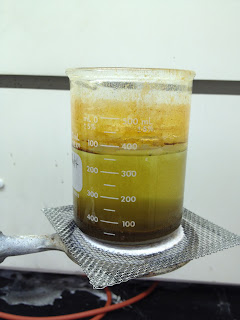Ferrofluid Polls- Science Fair
1)
Do you know what a Ferrofluid is?
Yes:
39
No: 10
2)
What ingredient do you think used in ferrofluid?
Kerosene: 36
Acetone: 4
Sulfuric Acid: 9
3)
How long do you think you boil ingredients in
order to make a ferrofluid?
Under an Hour: 10
1-2 Hours: 35
4-6 Hours: 4
4)
Pick one use of ferrofluid?
Identifies Cancer: 35
Inside Football: 10
Seals a Jump Rope: 4
5)
When are there more spikes in a ferrofluid
When a magnet is closer: 39
When a magnet is further: 10









